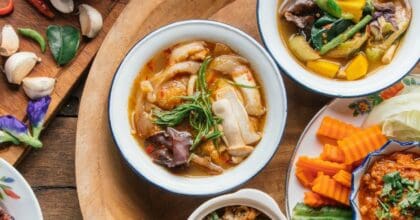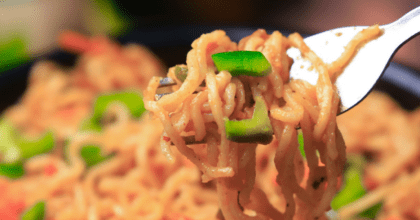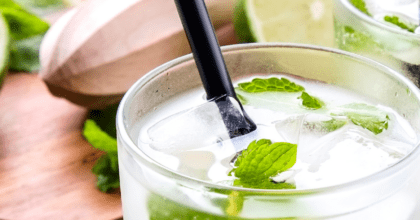US coffee house sales expected to reach $28.7 billion by 2021
While the convenience of on-the-go food and drink options is on the rise, it seems stopping by a coffee shop to grab a latte, mocha or cold brew coffee is still an essential part of the day for Americans. New research from Mintel reveals the US coffee house market continues to experience healthy growth with sales reaching an estimated $23.4 billion in 2017; a growth of 41 percent from 2011. Mintel forecasts coffee house sales will reach $28.7 billion by 2021. Although sales are heating up, the boom in new coffee shops entering the market is cooling down. The total number of coffee shops in the US is forecast to grow by just 2.17 percent this year, the slowest growth rate seen in the last six years*.
Mintel forecasts the RTD coffee segment will experience 67% growth 2017-22.
A potential threat to the coffee house market, ready-to-drink (RTD) coffee is the fastest growing segment (20 percent market share) of the $13.6 billion retail coffee market. The convenience and broad variety of flavors that RTD coffee offers prove to be popular as consumers increasingly seek out on-the-go and premium options. Mintel forecasts the RTD coffee segment will experience 67 percent growth from 2017-22.
“The coffee shop market is benefiting from shifting consumer interest in more premium, albeit pricier, coffee drinks such as specialty coffees, cold brew coffee and third wave coffee. However, the number of new coffee shops hitting the US market is slowing, indicating sales growth is coming from increased consumer expenditure on these more expensive beverages rather than unit growth and expansion,” said Caleb Bryant, Senior Foodservice Analyst at Mintel. “We expect to see coffee shop sales continue on an upward trajectory over the next five years; however, increased competition from the ready-to-drink coffee category could pose a substantial threat. Ready-to-drink coffee is one of the fastest growing non-alcoholic beverages in the US; it is convenient, comes in a variety of flavors and is oftentimes cheaper than specialty coffees at coffee houses. We also see many brands driving innovation in the category such as the emergence of nitro ready-to-drink coffees.”
Meanwhile, cold brew coffee continues to enjoy popularity in the US, with total US retail sales of refrigerated cold brew coffee growing 460 percent from 2015-17 to reach an estimated $38.1 million this year. While cold brew at retail is on the rise, just seven percent of coffee drinkers say they have made their own cold brew coffee at home, with 11 percent agreeing cold brew takes too long to make.
Innovation may help persuade consumers to enjoy cold brew at home as one in eight (12 percent) are interested in roasts specially made for cold brewing coffee at home and one in 10 (10 percent) are interested in RTD nitro cold brew. What’s more, 13 percent of coffee drinkers over the age of 21 say they would be interested in alcoholic cold brew coffee.
“Despite the fact that cold brew has revolutionized coffee house menus and garnered increased media attention due to its popularity, the average consumer is not highly engaged with iced coffee or cold brew. This is likely due to consumers preferring to buy cold brew coffee at coffee houses and other foodservice retailers, as well as reserving cold brew coffee for the occasional treat rather than incorporating it into their daily routines. This highlights that while foodservice and retail coffee markets may be competitive, they are intertwined as consumers are typically exposed to new coffee products in foodservice, resulting in product development and innovation in the retail space,” said Megan Hambleton, Beverage Analyst at Mintel. “Innovations such as alcoholic cold brew could broaden usage occasions, driving more frequent consumption at night, and ultimately encouraging at-home consumption more often.”
17% of coffee drinkers agree single-cup coffee pods are bad for the environment.
Finally, the single-cup coffee market, while widely popular in recent years, is now slowing down as nearly one in five (17 percent) coffee drinkers agree single-cup coffee pods are bad for the environment and one third (34 percent) say single-cup coffee pods are expensive. These negative perceptions could be affecting sales given that retail single-cup coffee sales grew just 3.7 percent 2016-17 to reach $4.5 billion, compared to 5.6 percent growth the year prior. Looking at the market overall, total retail sales of coffee in the US have slowed, with just 2.5 percent growth 2016-17, down from 2.6 percent growth the year prior.
“The overall retail coffee market enjoyed strong growth between 2012 and 2015, primarily driven by increased availability and interest in single-cup coffee and consumers buying single-cup coffee makers for their homes and offices. However, as market penetration of single-cup coffee makers has become more saturated and less people are purchasing new single-cup coffee makers, the segment has begun to stabilize, ultimately resulting in slowed growth of the coffee market as a whole over the last two years,” concluded Hambleton.
Press copies of Mintel’s Coffee US 2017 and Coffee and Tea On-Premise US 2017 reports, as well as interviews with Caleb Bryant, Senior Foodservice Analyst, and Megan Hambleton, Beverage Analyst, are available on request from the press office.
For the latest in consumer and industry news, top trends and market perspectives, stay tuned to Mintel News featuring commentary from Mintel’s team of global category analysts.
-
Mintel StoreGet smart fast with our exclusive market research reports, delivering the latest data, innovation, trends and strategic recommendations....View reports
-
Mintel LeapMintel Leap is a revolutionary new AI-powered platform that will transform your research process....Book a demo







































